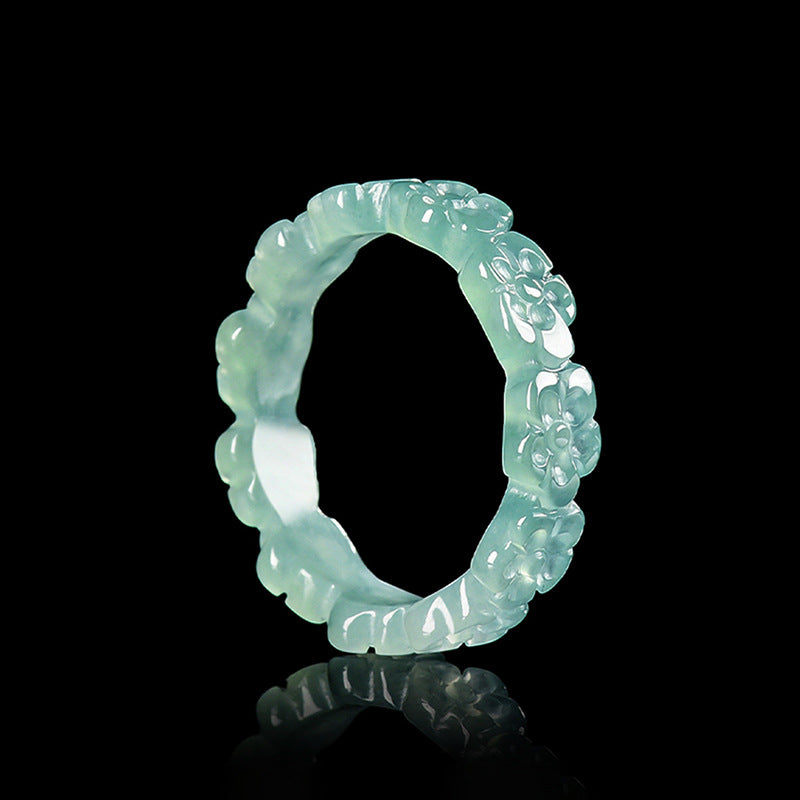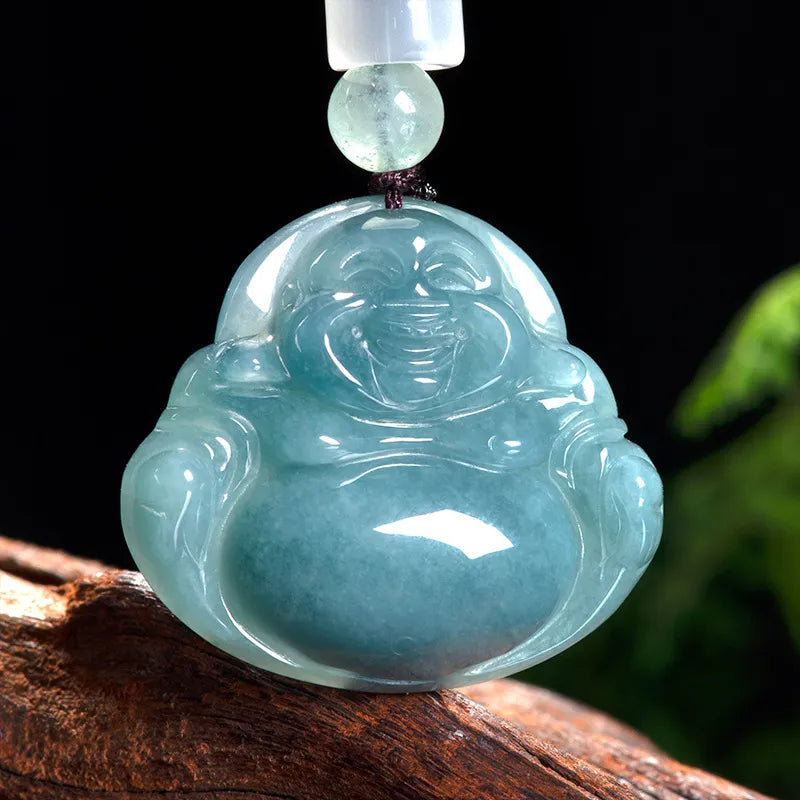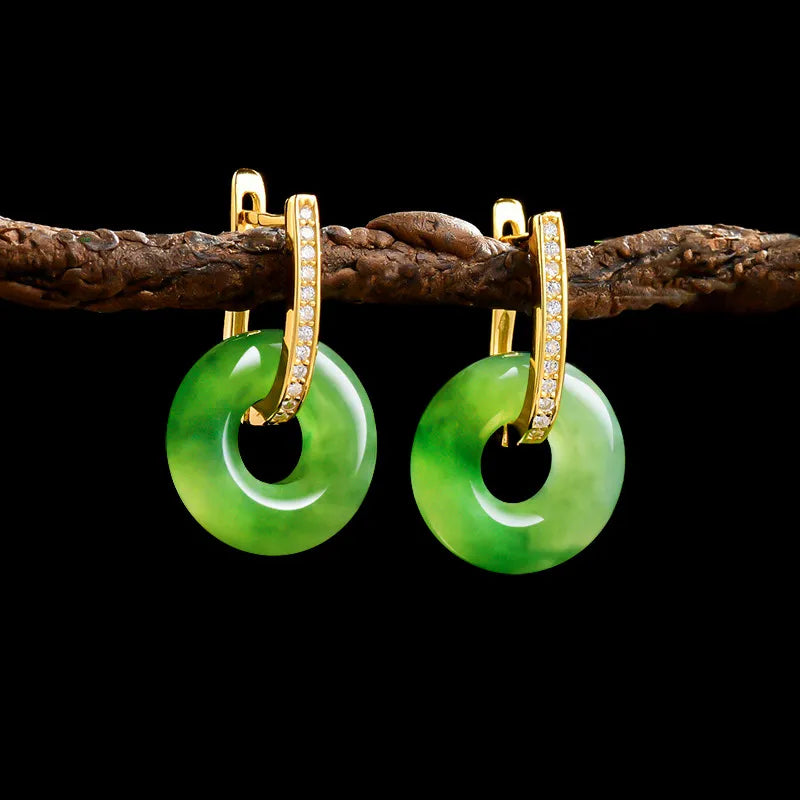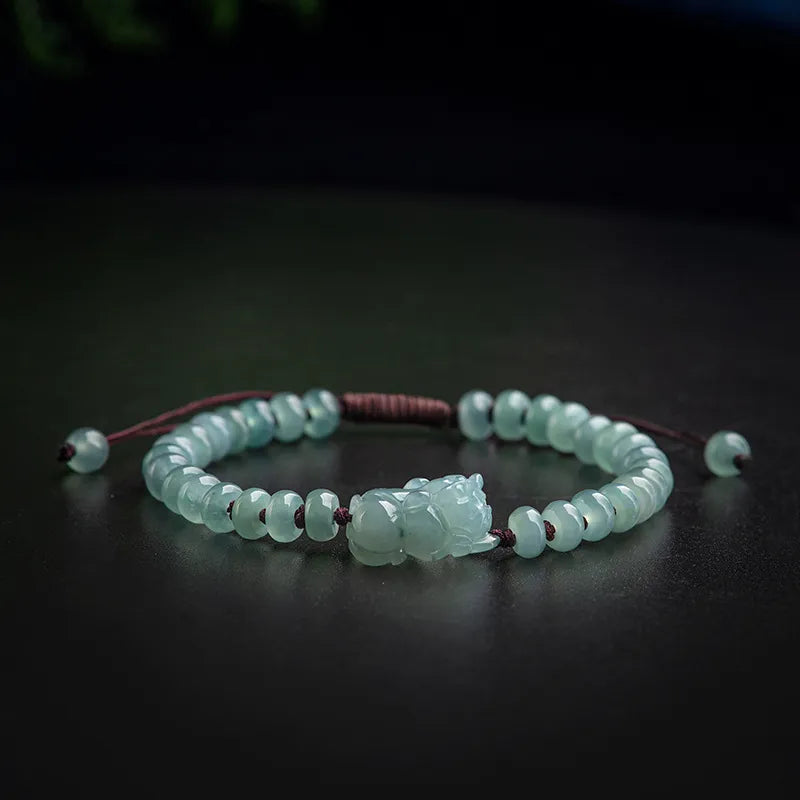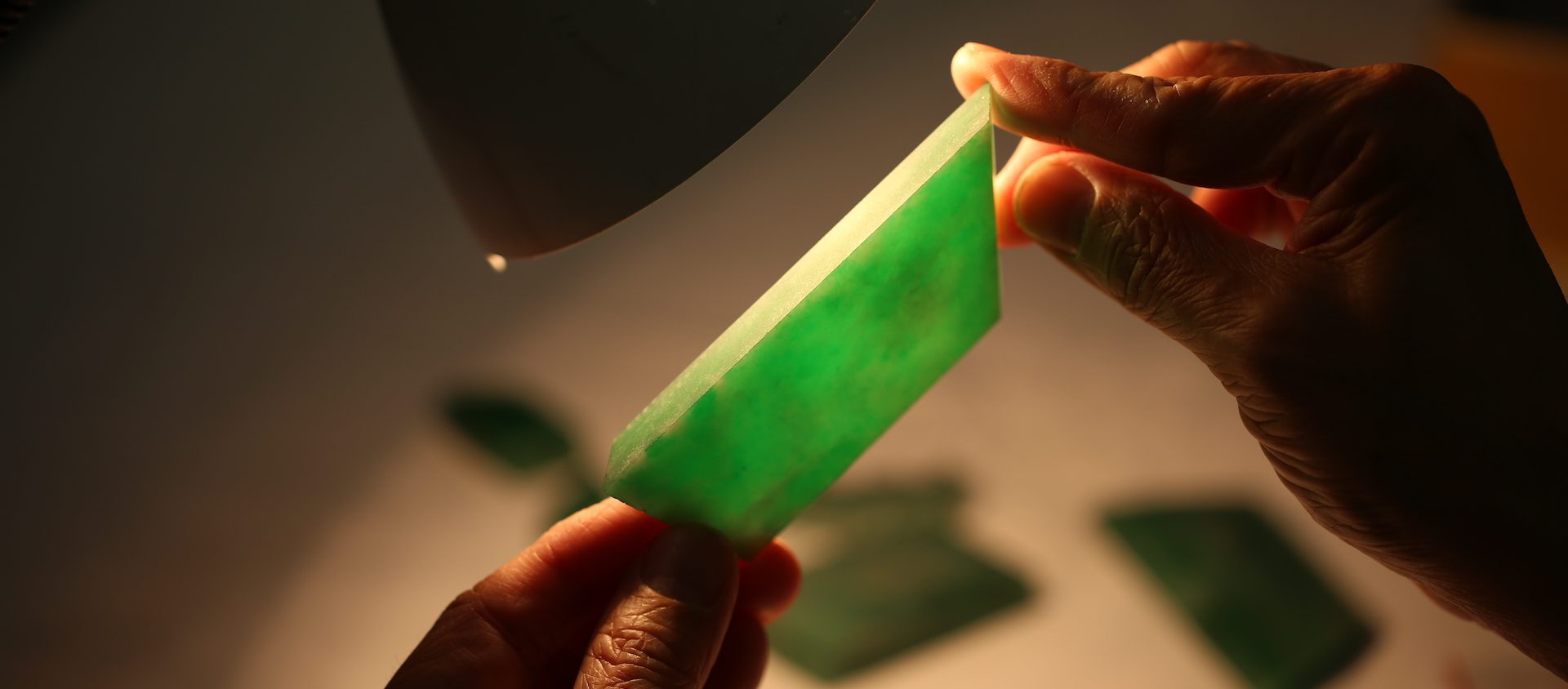
Image Source: pexels
You find Jade from Myanmar at the top of gemstone rankings for a reason. This gemstone stands out with its rare beauty, unmatched quality, and high demand. Collectors and jewelry lovers seek it for its vibrant color and smooth texture.
-
The global jadeite market is growing fast, valued at $0.6 billion in 2024 and expected to reach $1.1 billion by 2033.
-
Myanmar supplies about 70% of the world’s jade, with its market valued at $31 billion a year.
Many consider owning this jade a symbol of status and prestige.
Key Takeaways
-
Myanmar jade is wanted for its bright color and smooth feel. It shows wealth and high status.
-
The jadeite market is growing fast around the world. Myanmar gives about 70% of all jade. This jade is worth $31 billion each year.
-
Imperial green jade from Myanmar is the most expensive type. Its price is much higher than jade from other places.
-
Jade mining in Myanmar has big problems. Workers face unsafe jobs and nature gets hurt. These issues show that better rules are needed.
-
Knowing what makes Myanmar jade special helps buyers and collectors. It lets them choose wisely when buying this gemstone.
Unique Qualities
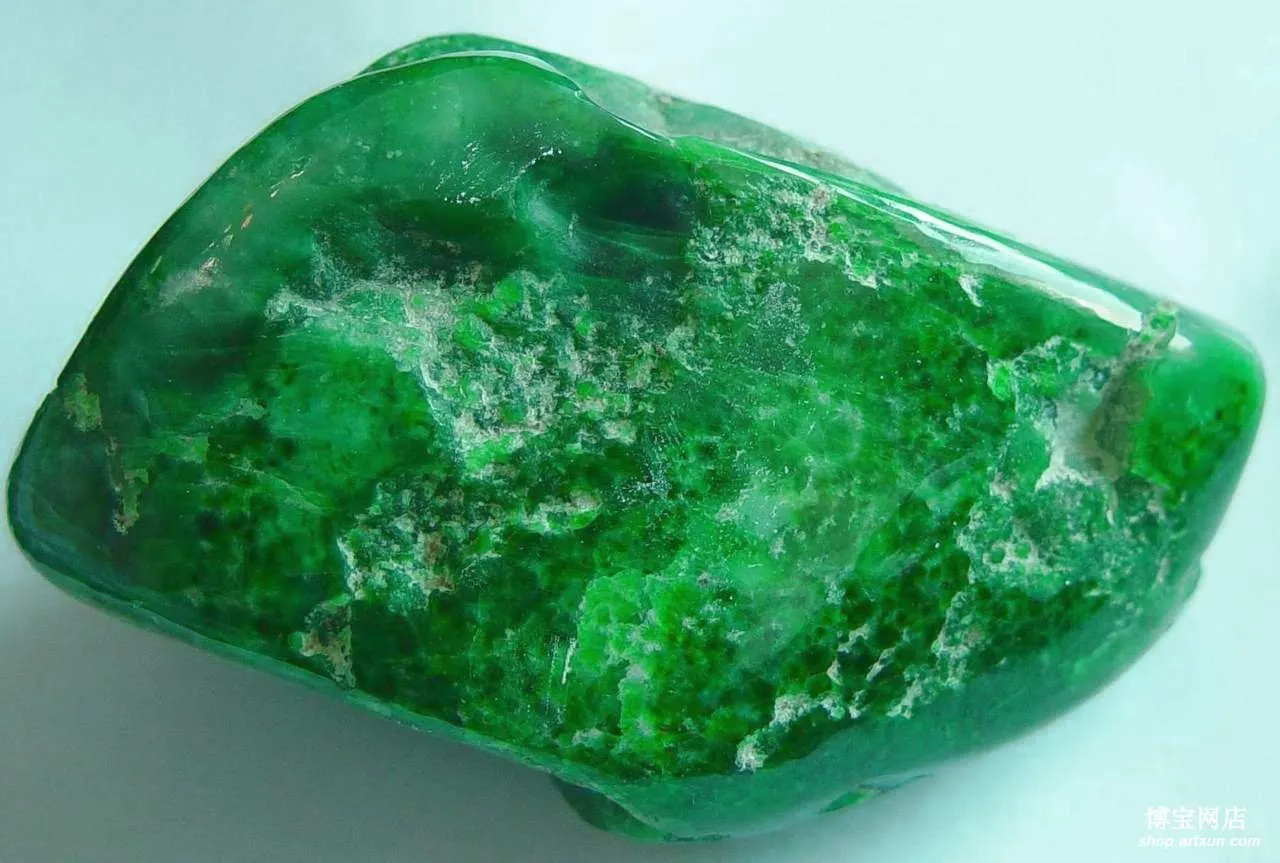
Origins
Jade from Myanmar is special because of where it comes from. It forms deep underground in a rare way.
-
Hydrous fluids from the Indian plate help make jadeite.
-
Serpentinite rocks are important for these deposits.
-
Tectonic activity pushes jadeite rocks up so people can mine them.
Myanmar jade has a unique mix of minerals. You find kosmochlor, amphibole, albite, nepheline, and vesuvianite in it. Jade from Guatemala has grossular garnet, albite, and rutile instead. This mix gives Myanmar jade its bright color and smooth feel.
Experts call Myanmar "the heart of jade." Its deposits are rare and give the best jadeite.
Color and Texture
Jade from Myanmar has bright color and smooth texture. Gemologists use strict rules to judge these features. They check grain size, clarity, purity, and luster. You can see these rules in the table below:
|
Quality Parameter |
Description |
|---|---|
|
QA1a |
Check grain size and diaphaneity. |
|
QA1b |
Look for flaws in the texture. |
|
QA2a |
Check how clear the stone is. |
|
QA2b |
Look for cracks and fractures. |
|
QA3 |
Check the base and luster. |
|
QA4a |
Judge the color’s hue and tone. |
|
QA4b |
See if the color is even. |
|
QA5 |
Look at shape and polish. |
|
QA6 |
Volume matters more than size. |
The most valuable color is imperial green. This color comes from Burma and costs the most. The table below shows how color changes the price:
|
Color |
Location |
Price (Per Carat) |
Price (Per Gram) |
|---|---|---|---|
|
Imperial green |
Burma |
$1750-$2750 |
|
|
Imperial green |
Outside of Burma |
$100 |
$500 |
|
Dark green |
Any |
$5-$150 |
$25-$750 |
|
Lavender |
Any |
$200-$1400 |
N/A |
|
White |
Any |
$100-$300 |
N/A |
Translucency is also important for value. The best jadeite lets some light through. Stones that look cloudy or solid are worth less. Rich color and good translucency make Myanmar jade more valuable.
|
Factor |
Description |
|---|---|
|
Translucency |
The best jadeite lets light through; cloudy stones are worth less. |
|
Color Intensity |
Rich color and translucency make jadeite worth more. |
|
Overall Appearance |
Even color is best; spots or veins lower value. |
You can compare Myanmar jade to other jades by their scientific traits:
|
Property |
Myanmar Jade (Jadeite) |
Other Jades |
|---|---|---|
|
Mineral Composition |
Mostly jadeitic pyroxene |
Changes by region |
|
About 3.34 |
Usually lower |
|
|
Texture |
Can be fibrous and smooth |
Often has shiny spots |
|
Unique Characteristics |
Makes a special sound when hit; may have a 'shin' |
Changes a lot |
Myanmar jade has fine texture, high transparency, and bright shine. These traits make it rare and valuable. Collectors and jewelers want it for its beauty and meaning.
Jade from Myanmar: Global Market
Market Trends
Jade from Myanmar is the most popular in the world. Most jade comes from Myanmar, The jade mining area is located in Hpakant, northern Myanmar, on the banks of the Ulu River, 350 kilometers north of Mandalay. Experts say Myanmar gives up to 90% of all jade. This makes Myanmar the main place for jade.
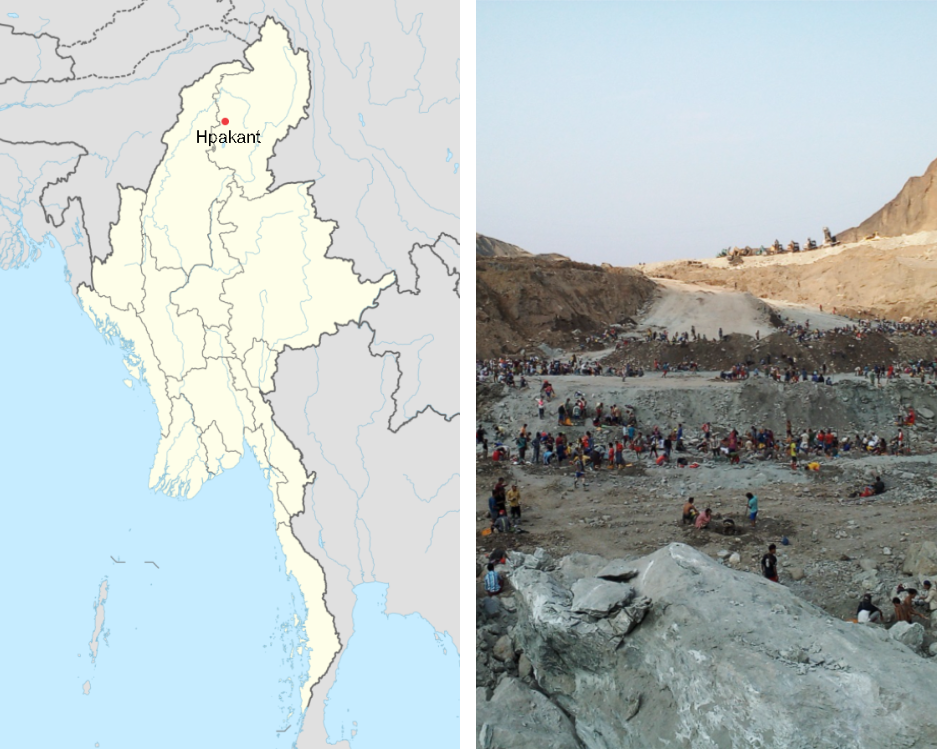
In the last ten years, jade demand has changed a lot. This happened in big countries that buy jade. Here are some things you should know:
-
China buys the most jadeite and makes demand high.
-
If China’s economy slows or fights corruption, fewer people buy mid-priced jade.
-
The best jadeite keeps its value or gets more expensive, even when sales drop.
-
In China, people believe jade brings luck and shows status, so they keep buying it.
Even when the market changes, Myanmar’s best jade is still wanted.
Myanmar’s jade business is very big. The country earns billions of dollars from selling jade. But most local people do not get much money from this. People like Ko Naw Aung say they do not benefit from jade mining. They look for leftover stones in waste piles. The government gets some money, but most profits go to companies or are lost to corruption.
Demand Drivers
Many things make people want Jade from Myanmar, especially in China and other big markets.
-
Chinese buyers spend a lot on jade, making prices go up.
-
Rich collectors in China think jade is safe to buy and shows wealth.
-
Myanmar mostly sells raw jade because it does not have many factories. This means the country earns less and smuggling happens.
-
In Kachin State, groups like the KIO make buyers pay taxes and get vouchers before buying jade.
-
The jade business is linked to fighting and corruption, mostly in mining areas.
-
Many workers in jade mines get sick, like with HIV/AIDS.
Here is a table that shows the main things that affect the jade market:
|
Factor |
Description |
|---|---|
|
Chinese Investment |
Big spending from China makes demand and prices go up. |
|
Rising Prices |
Rich buyers in China pay more for the best jade. |
|
Lack of Processing Industry |
Myanmar sells raw jade, so it misses extra profit. |
|
Corruption and Conflict |
The jade trade has problems with corruption and fighting, especially in Kachin State. |
|
Health Crises |
Mining areas have health problems for workers and their families. |
Jade from Myanmar is rare and special. Its color, texture, and meaning make it the most wanted jade. Hard mining and low supply make it even more valuable. Collectors and jewelry fans love it.
Quality Differences
Jade from different countries is not the same. Myanmar jade is the best for collectors and jewelers. Here are some important facts:
-
Myanmar gives more than 95% of top jadeite.
-
Myanmar jadeite costs much more than other jade.
-
Guatemalan jadeite looks darker and gray. It has many colors, but rarely shows bright green like Burmese Imperial jadeite.
-
Canadian jade is mostly nephrite. It is good, but not as fine as Myanmar jadeite.
-
The Mogok area in Myanmar makes emerald-green Imperial jadeite. This kind is very valuable.
-
Most Guatemalan jade is not clear. Collectors like Burmese jade because it glows and looks clear.
You can use these rules to judge jade from anywhere:
|
Criteria |
Description |
|---|---|
|
Color |
Even color or nice patterns are best. Bright green is worth the most. |
|
Transparency |
Jade that lets light through is worth more. Opaque jade is not as good. |
|
Texture |
Smooth texture helps light bounce off better. |
|
Cut |
How jade is cut changes its value. Hololith and cabochon cuts are liked. |
|
Size and Weight |
Bigger jade is worth more, but quality is most important. |
|
Treatment Grades |
Fake treatments can make jade less strong and less valuable. |
Preference Factors
People in different places like jade for different reasons. In Asia-Pacific, people buy quality jade jewelry because it means a lot in their culture. In Western countries, fashion and health trends affect what people buy. Many buyers now want jade that is mined and sold in fair ways. They want to know how jade is found and traded.
|
Region |
Consumer Preference Description |
|---|---|
|
Asia-Pacific |
People spend a lot on quality jade jewelry because it matters in their culture. |
|
Western Markets |
Fashion and health trends change what people want. |
|
Global Trend |
Buyers want jade that is mined fairly and sold honestly. |
Gem traders and collectors say Myanmar jade is the best to buy. Only Myanmar has Imperial jadeite, which is the most valuable. In Asian markets, Myanmar jadeite sells for high prices and is wanted by many. This makes it the top pick for beauty and lasting worth.
If you want the best jade, choose Jade from Myanmar. Its rare color, smooth feel, and meaning make it the “heart of jade” worldwide.
Mining Challenges
Conflict and Safety
Mining jade in Myanmar is very hard and risky. The mountains make it tough to dig for jade. Miners climb steep cliffs and walk on shaky ground. The weather can change quickly and make things worse. These dangers make real Myanmar jade rare and special.
In Kachin state, a landslide covered a camp near a jade mine. At least 113 people died. Activists say bad mining conditions happen because the government does not watch closely. They blame military leaders for making things worse. They warn that better care for the land could stop these disasters.
The jade business in Myanmar is not just about gems. It is also about power and fighting. Military leaders and armed groups run much of the trade. This causes violence and cheating.
-
In Hpakant, a landslide killed 162 miners and hurt many more. This shows how dangerous jade mining is.
-
Most victims were poor workers searching for jade scraps. This shows how desperate people are for money.
-
Landslides happen often in Hpakant. Poor communities suffer most because of fighting and unfair treatment.
The jade business is worth billions of dollars. It is at the center of fighting and unfair treatment in northern Myanmar. The military and armed groups have taken more control. This has caused more violence and cheating.
"Blood Jade" means jade dug up in these tough places. Instead of helping people, the jade trade often causes fighting and drug problems.
Environmental Impact
Jade mining in Myanmar hurts nature too.
-
Cutting down trees destroys homes for animals.
-
Dirt washes away and makes the soil weak.
-
Mining pollutes rivers and lakes with dirty water.
-
Carbon dioxide from mining adds to global warming.
-
Machines make the air dusty and noisy.
Mining leaves big marks on the land. Groups from other countries want Myanmar to make better mining laws. They ask for fair profit sharing and clear rules. They want stronger protection for people and nature. If Myanmar listens, jade could bring hope instead of harm.
Jade from Myanmar is famous for its rare color. It feels smooth and has special meaning in many cultures. Collectors like its bright green shade and good quality. People keep buying it because of tradition and strong demand. Mining jade is hard and risky for workers. New rules and better choices might change things soon. You can enjoy how beautiful jade looks. You should also know about the hard work to get each stone.
The story of Jade from Myanmar inspires people everywhere.
FAQ
What makes jade from Myanmar so valuable?
You find Myanmar jade rare because of its unique color and texture. Miners face tough conditions in high mountains. Collectors and jewelers prize it for its beauty and cultural meaning. This jade is often called the “heart of jade” worldwide.
How can you tell if jade is from Myanmar?
You can check the color, texture, and translucency. Myanmar jade often shows a bright, even green and feels smooth. Experts may use lab tests to confirm its origin. Always ask for certificates when you buy jade.
Why do collectors prefer Myanmar jade over other types?
Collectors choose Myanmar jade for its rich color and high clarity. The stone’s history and cultural value add to its appeal. You see higher prices for Myanmar jade because of its rarity and quality.
Is jade mining in Myanmar safe for workers?
Mining jade in Myanmar can be dangerous. Workers face landslides, poor safety, and health risks. Many miners search for leftover stones in unsafe areas. You should know that mining conditions often remain harsh.
Does jade mining harm the environment?
Jade mining can damage forests and pollute rivers. Machines and digging change the land. You may see soil erosion and water pollution near mining sites. Many groups now ask for better rules to protect nature.

